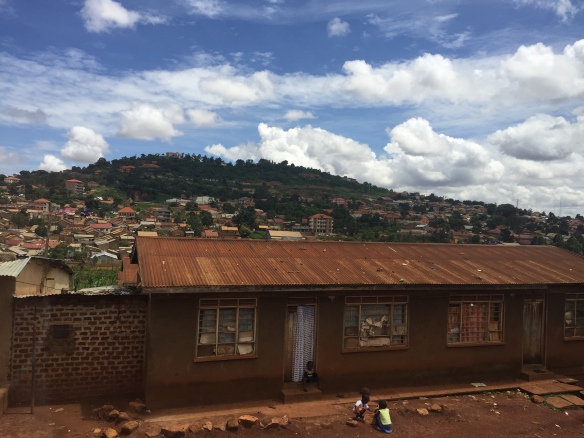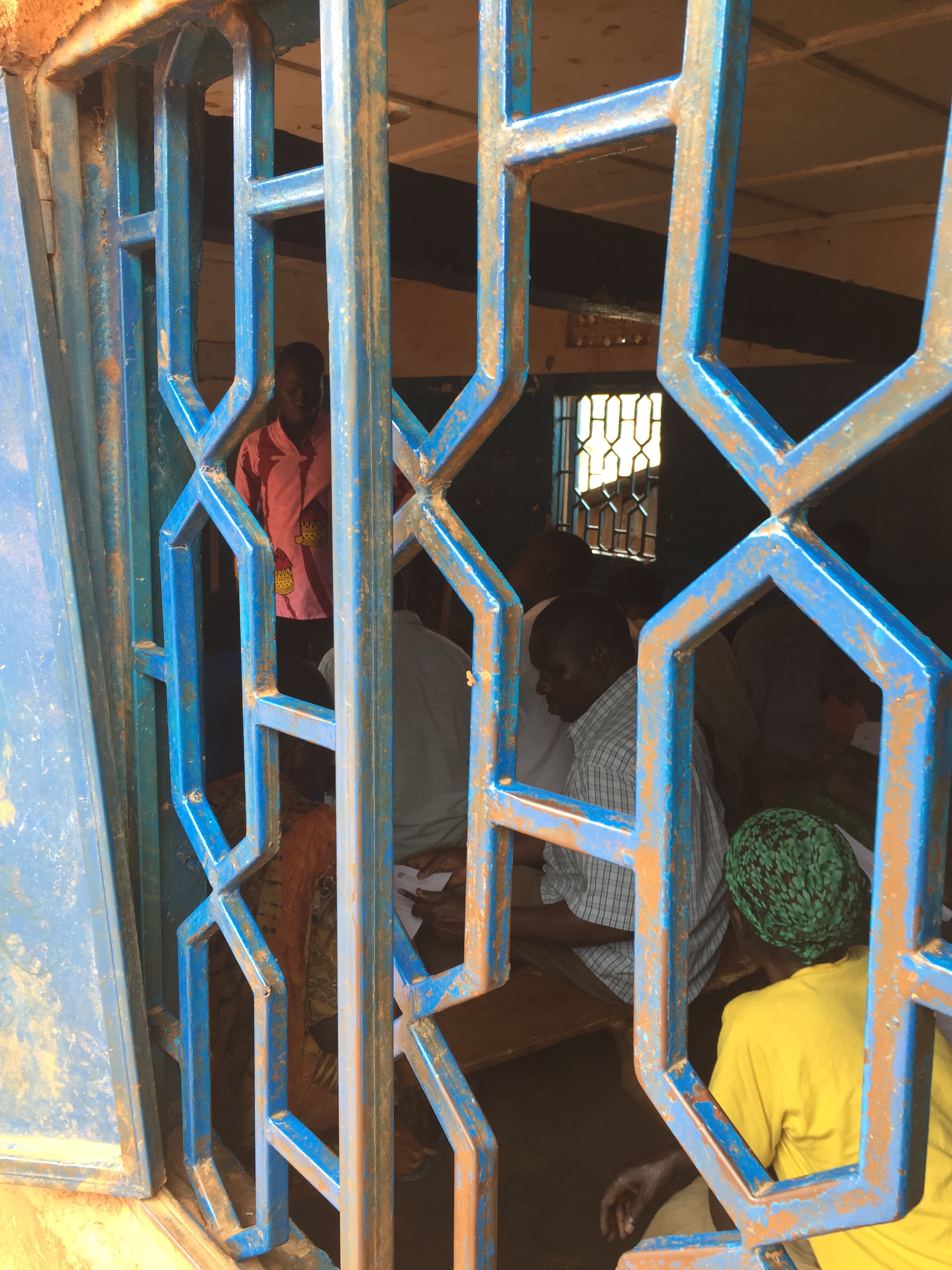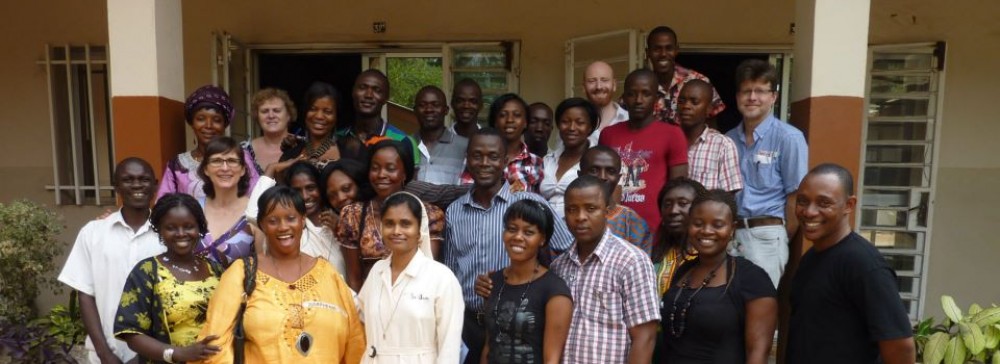To follow up on the meeting with the Acholi Makerere Student Association yesterday, we travelled out of Kampala to visit residents of an Acholi village which was constituted when large numbers of conflict affected Acholi people were displaced from their land in Northern Uganda in the mid to late 1980s. The King of Buganda (Muwenda Mutebi II) gifted the land to be used by the Acholi people during the crisis.

The Acholi Quarters, Kampala District
The village is officially referred to as the ‘Acholi Quarters, Banda Zone 1, Banda Parish, Nakawa Division, Kampala District’, and it consists of 5000 people squeezed into a comparatively small patch of land that is boundaried by a railway line, a river and a road that leads to a Seven Day Adventist Church. This was clearly a very deprived area with basic amenities. The area has been described as a ‘slum’ and it is not uncommon for out-breaks of health conditions commonly associated with slums (e.g. Cholera outbreaks) to occur. Further details about the conditions in the Acholi Quarters are available here: https://www.ntnu.edu/documents/152037/0/2009+Fieldwork+Report+-+Acholi+Quarters%2C+Kampala.pdf/77f770ce-d0b2-4470-9d55-5cc8d3083cbf
We first met with a community elder who Rosco had liaised with in the weeks prior to our arrival in Uganda. The elder warmly welcomed us and then went to gather up community members for our meeting. John Steven Opio, our facilitator from yesterday’s meeting had kindly agreed to accompany us to this meeting and pose the questions to the group in Acholi, so that we could conduct the discussions entirely in Acholi – which was the mother tongue of all of the attendees.

Produce on sale
On arrival in the quarters we were escorted down an alley and into a single room building that serves as a meeting place for community members. We greeted each of the people that had kindly made time to meet with us. There were 24 people (15 women and 9 men) in attendance – the majority of whom were above 50 years of age. This served to counterbalance the comparatively younger aged Acholi people that we had spoken to the previous evening. The meeting lasted around 90 minutes.

The room of our meeting with community members from Acholi Quarters
Young children, curious as to why the adults had gathered together, poked their heads through the open doorway into the room – only to be shooed away by the adults. The energy again built throughout the duration of the meeting, culminating in the singing of songs and a number of people getting up to dance (click the link below to see the video below – reproduced with the kind consent of everyone present). There were broad smiles and enthusiastic cheering amongst those present – people were clearly enjoying themselves.
https://www.dropbox.com/s/xeid9in6jkwsiug/IMG_1404.MOV?dl=0
In terms of words that I was able to pick up, it seems that the Acholi words ‘kanyo’ or ‘ciro’ can be used to capture what in English is termed as ‘resilience’. At the end of the meeting I talked in English with a number of the people present. They were keen to highlight the difficult conditions in which they are living, and how important it is for the community to act collectively to support each other. A point that one man was keen to make was that if additional resource and support was to be made available to assist the Acholi people this should be spent in improving conditions in Acholi land in Northern Uganda, rather than in the Acholi Quarters in Kampala. There are concerns that the King wants his land back and that the rights of the Acholi people to remain on the site are far from secure. The Acholi people have endured high levels of precarity in recent times and there is no guarantee that this will be resolved any time soon.
Cliodhna’s reflections:
Today’s interview took place a world away from the setting of Makerere University. We visited an Acholi village which was made up of precariously placed makeshift houses among ululating dusty red clay roads. We met with John Steven Opio again, our facilitator from the day before, who introduced us to the village elder and a large group of older residents. Without Steven the interviews would not have been possible and we were grateful for his translating and mediating skills. It was a wonderful experience to meet such a different demographic compared to previous groups and I look forward to hearing all of their stories and perspectives when the recordings are translated. Similar to the other interviews, it started off quite slowly and calmly but by the end there was dancing, singing, laughter, and children and teenagers looking in the windows and doors to see what all the fuss was about! Everyone seemed to really enjoy it, and again I got the sense that getting together and discussing things about a shared culture is simply a gratifying activity. However, we were aware of the huge difficulties facing the residents of this village where eviction and disease are commonplace and where there is no job security. They also expressed a desire to move back to Northern Uganda where they are originally from.
Walking back through the village after hearing these stories I was more aware of the ways that people were trying to make their lives work in such precarious conditions. There were various makeshift stalls or blankets set up along the roads selling vegetables, dried tilapia (a local staple fish) and white ants; young men had set up cinemas where they were charging a small price to see Hollywood films or live premier league football matches (the international recognised language of football!); and there were messages painted on the walls of small schools urging parents to educate their children. Today’s meeting showed me Ugandan life from another perspective, and was a lesson in the struggles facing displaced groups in this vastly ethnically and linguistically diverse country.
